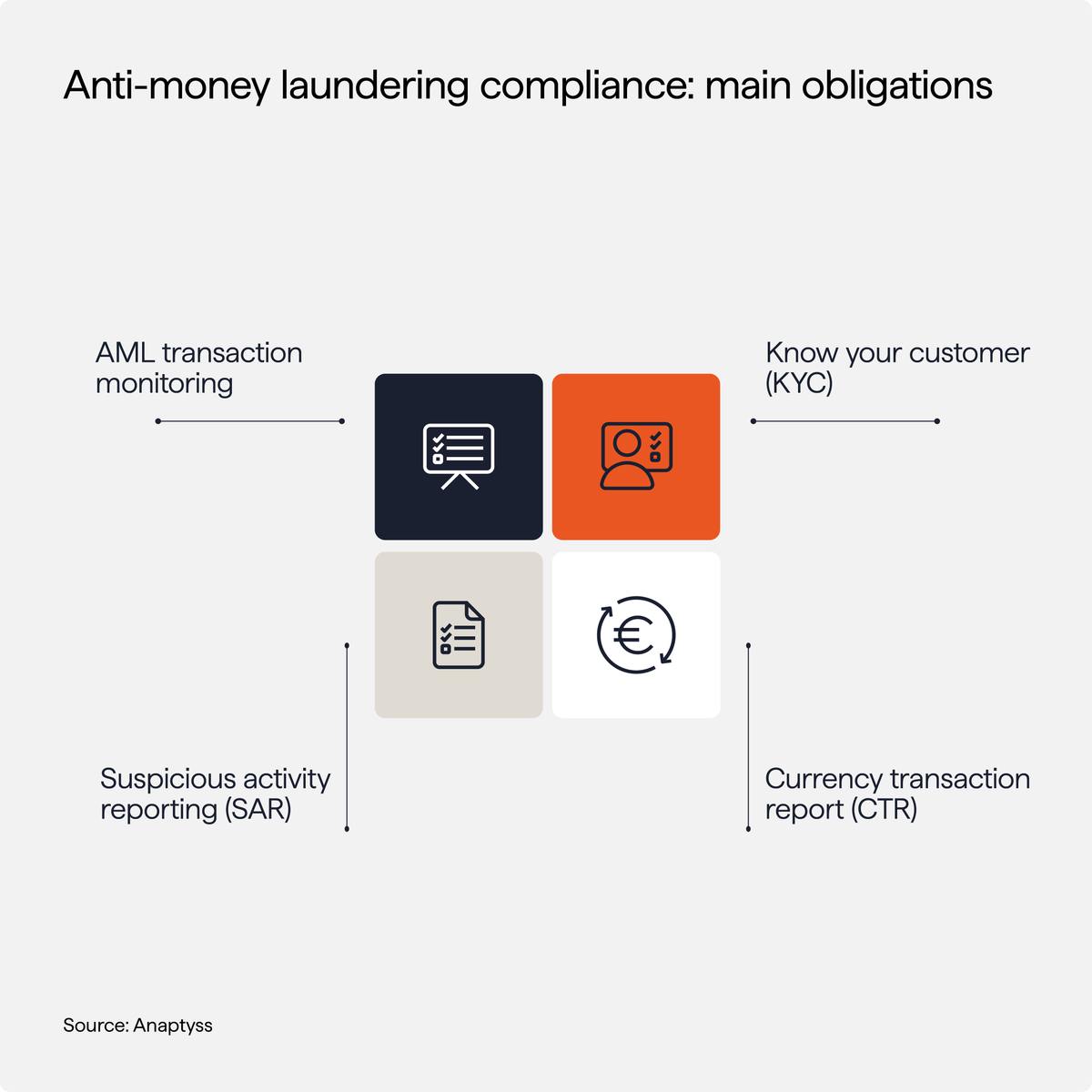Anti-Money Laundering (AML)
Anti-Money Laundering (AML) refers to a set of laws, regulations, and internal procedures designed to prevent criminals from making illegally obtained money appear to be legitimate income. It is a legal and operational framework that helps financial institutions identify and respond to financial crime risks.
Purpose
The main goal of AML is to stop money that comes from crimes such as fraud, corruption, drug trafficking, or tax evasion from entering the financial system. By doing so, AML frameworks help protect businesses from being misused and reduce the impact of organized crime and terrorism financing on society.
Common AML measures
AML programs usually include the following components:
- Customer Due Diligence (CDD): Verifying customer identity and assessing risk before establishing a relationship
- Know Your Customer (KYC) checks: Gathering personal and financial information to understand who the customer is
- Transaction monitoring: Continuously reviewing customer activity to detect unusual or suspicious patterns
- Suspicious Activity Reports (SARs): Reporting certain types of activity to local financial authorities
- Ongoing risk assessments: Regularly reviewing and updating risk profiles and internal controls
If you’ve ever had to submit your ID or answer extra questions when opening an account, that’s part of how AML works in the real world.

AML in practice
AML is part of the daily operations of any regulated financial institution. When a customer opens an account, their identity is verified, and their risk level is assessed. Transactions are monitored automatically through software, and unusual behavior—such as large cash deposits or rapid transfers between unrelated accounts—may trigger alerts.
Compliance teams then review these alerts and, when needed, file reports with national authorities. In many countries, failing to comply with AML obligations can lead to regulatory action, fines, or even criminal charges.
You might never hear about it, but those behind-the-scenes checks help keep the whole system clean.
Who is affected?
AML requirements apply to a wide range of financial and non-financial businesses, including banks, fintech firms, payment providers, insurance companies, and investment platforms. Companies working with digital assets, such as crypto exchanges, are also increasingly subject to AML rules.
So even if you don’t work in a bank, AML could still affect your day-to-day operations.
Interesting facts
- The concept of AML first gained global attention with the formation of the Financial Action Task Force (FATF) in 1989. FATF created a set of recommendations that form the basis for AML legislation in over 200 countries.
- The European Union has steadily expanded its AML framework, with the 6th Anti-Money Laundering Directive (6AMLD) introducing tougher criminal penalties and a clearer definition of offenses.
Interested in learning more?
AML continues to evolve as criminals find new ways to exploit financial systems. Staying informed about regulatory updates, technological tools, and global enforcement trends is key for any organization aiming to stay compliant and protected.
You can explore related topics like KYC, Sanctions Screening, or PEP (Politically Exposed Person) to get a deeper understanding of how AML fits into broader compliance efforts.